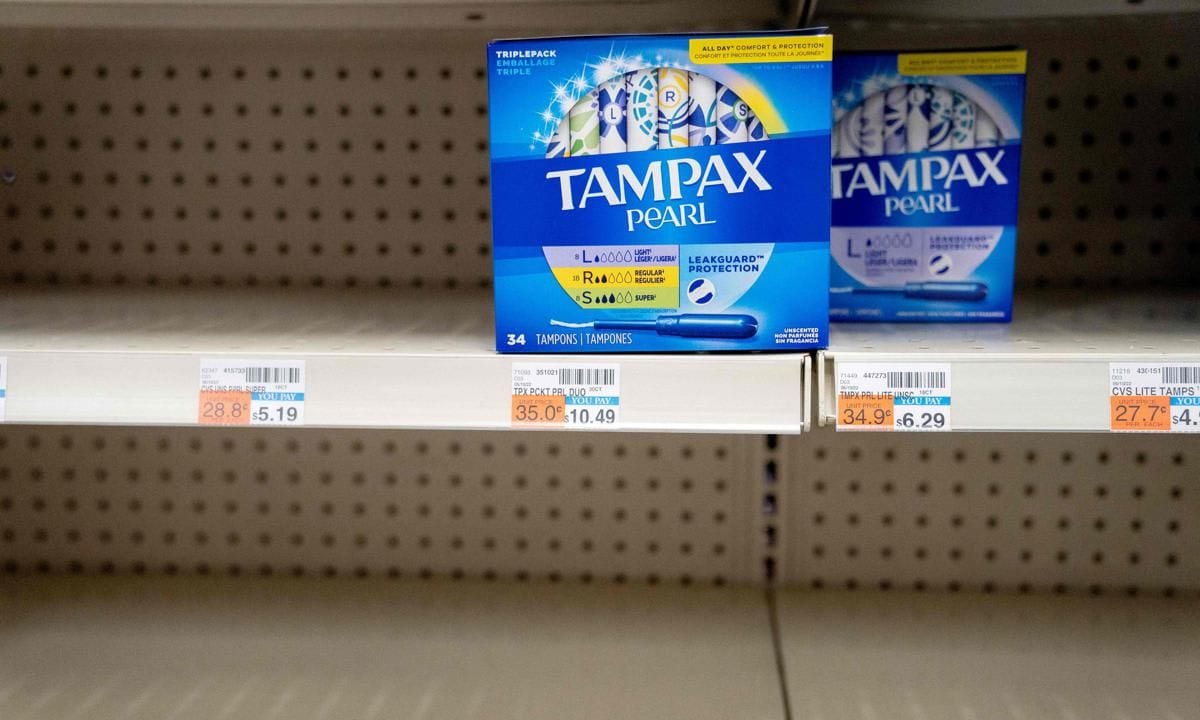Women are the latest group of people affected by supply chain shortages. Stores everywhere around the United States have empty shelves where tampons once used to sit. The shortage is due to what The Hill described as a “perfect storm” caused by the COVID-19 pandemic, inflation, labor shortages, and high demand. Here’s everything you need to know and three alternatives you can use instead.
Price Hanna Consultants, which focuses on key raw materials and nonwoven and hygiene absorbent items told The Hill that the U.S. relies on other countries to produce the materials used in tampons like rayon and cotton. Before the pandemic, the industry was at “just-in-time inventory planning” and was always able to “precisely arrange for the delivery of the raw materials.” Now it’s been, “very much disturbed.”
Since we are approaching summer, when women wear more tampons to swim and enjoy other activities, the higher demand for the materials has also inflated prices, leading manufacturers later to raise their prices to maintain their margins. The labor shortage is also affecting it, as there are not enough truckers to deliver the raw materials to plants or deliver the finished products to retailers.
The personal care company Edgewell, whose brands include o.b. and Playtex, pointed to workforce shortages in a statement. “Production, and therefore inventory, of these products, was impacted due to extensive workforce shortages caused by two separate Omicron surges in the U.S. and Canada in late 2021 and early 2022, respectively,” they explained.
Tampon Alternatives
Not having access to menstrual supplies can present a stressful situation for women who rely on them. If you are finding it difficult to find them or want a solution sooner rather than later, check out these three alternatives.
Menstrual cups
A good alternative is menstrual cups. The reusable hygiene product is a small, flexible funnel-shaped cup made of rubber or silicone that is inserted into the vagina. If you can put in a tampon, you should find it relatively easy to insert it. The friendly alternative to tampons is around $20-$40 and can actually hold more than other methods, and you can wear them for up to 12 hours, and they can last six months to 10 years, per Healthline.
Period Underwear
Another option you can try is period underwear. At $15-$50 a pair, they can last up to 12 hours and absorb anywhere from two to ten times the amount of a regular tampon. They look and feel like regular underwear and have built-in layers that prevent leaking. They are also better for the environment and can save you money in the long run.
Menstrual discs
At a $14-$50 price point, menstrual discs are like menstrual cups in the way that they’re both inserted. While there is a bit go a learning curve, the reusable option is better for the environment. They can last up to 12 hours.
,type=downsize)
